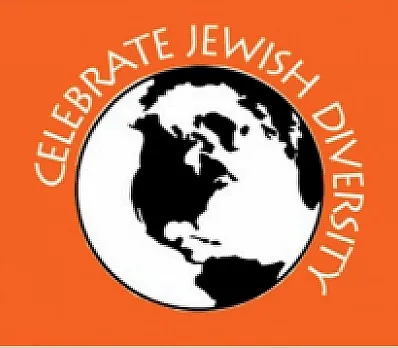The Egg on the Seder Plate
The Egg on the Seder Plate
Read this Haggadah supplement during Maggid after Rabban Gamliel's explanation of Pesach, matzah, and maror. We discuss many items on the seder plate – but the egg is often overlooked. Why is there an egg on the Seder plate? How is the egg connected to Passover, and what does the egg on your table symbolize about our relationship to animals today?
1. Why is there an egg on the Seder plate?
The egg on the Seder plate, along with the zeroa or shankbone, echoes an instruction in the Mishnah to include at least “two cooked foods” in our seder. The Talmud, commenting on this phrase, says the two foods represent two sacrifices, the korban pesah (Pesach sacrifice) and the korban hagigah (festival sacrifice), that were originally brought in the Temple on Passover, and it mentions both the bone and the egg among other examples.
Since the twelfth century or so, though, the egg has been a regular part of the seder plate. Why? What does the the tradition’s choice of an egg as one of those symbolic foods mean?
Like the matzah, which represents both suffering and freedom in one food, the egg has taken on more than one symbolic meaning.
On the one hand, along with the parsley or green vegetable of karpas, eggs are a symbol of new growth, suitable for this “Festival of Spring.” Passover, the holiday of redemption, is a time of rebirth and renewal, and emphasizing its connection to spring reinforces that meaning.
On the other hand, eggs are a food associated in Jewish tradition with mourning. They are often eaten by mourners at the first meal following a funeral of a loved one, and at the final meal before the fast of Tisha B’Av, eggs are served dipped in ashes. The seder plate egg reminds us of the way we observed Passover in Temple times; at the same time, it reminds us that the Temple has been destroyed, and the spiritual, ritual, and communal opportunities it offered to us are lost with it.
Questions for discussion:
Does one of these explanations most resonate with you? Which, and why?
The egg is both a symbol of mourning and of festivals. Where else is duality present in the Haggadah?
What other explanations do you know for an egg on a seder plate?
2. What does the egg mean today?
Just as the egg can symbolize both mourning and renewal, the eggs we choose to put on our table today can reflect either care for living creatures or one of the plagues of our time: factory farming.
Where did the egg on your seder plate come from? If you bought it at a supermarket, it likely came from chickens living in a factory farm. More than 90% of laying hens in the U.S. are packed into cages where each bird has less area than a sheet of printer paper to live her whole life. Barely able to move, they suffer injuries, disease, and extreme distress. Many others endure similar distress in large, overcrowded barns.
Jewish tradition mandates compassion for all creatures, and the mitzvah of tzaar baalei chayim specifically forbids causing animals unnecessary suffering. Mistreating hens clearly contradicts this value.
As people have started learning more about where most eggs come from, many have been disturbed by the status quo and are demanding better. Five states have passed legislation forbidding cruel battery cages on farms. In November 2016, Massachusetts passed a ban on even selling eggs from hens in these confinement systems, and more states are sure to follow. The industry is on the verge of change, and consumer pressure right now can tip the scales.
Questions for discussion:
Where do your eggs come from?
Why do you think Judaism mandates compassion for all creatures?
3. What can I do?
Buy Higher Welfare Eggs: As an individual, aim to purchase higher welfare eggs.
To support systems where hens can walk, spread their wings, lay eggs in nesting spaces, dust bathe, and perform other natural behaviors, we must support farms that value higher welfare. There’s more we can do for hens, but buying higher welfare eggs is where we start!
Visit BuyingPoultry.com to find brands that are certified by a third-party animal welfare certification program. Preferably, choose products with labels from “Certified Humane,” “Certified Humane + Pasture Raised,” or “Animal Welfare Approved.”
Labels like “cage-free,” “free range,” or USDA Certified Organic might imply a higher level of humane treatment, but these claims alone do not guarantee higher welfare. Instead, look for the third-party certifiers listed above; visit their websites to see their exact welfare standards.
Create a food policy at your Jewish organization: Jewish organizations – like your synagogue, day school, camp, or JCC – serve large amounts of food and can make a tangible impact by changing the eggs they buy and reducing the number of eggs served at each meal. Commit your Jewish organization or household to sourcing higher welfare eggs this year with a simple commitment on Hazon’s website.
Choose an alternative to the egg: Try an eggplant, wooden egg, or avocado on your seder plate. Use this as a chance to start a conversation at your Seder about animal welfare. You can also reduce your egg consumption by buying increasingly available egg alternatives that are also certified kosher, like VeganEgg from Follow Your Heart.
Inspired to create
your own Haggadah?
Make your own Haggadah and share with other Seder lovers around the world
Have an idea
for a clip?
People like you bring their creativity to Haggadot.com when they share their ideas in a clip
Support Us
with your donation
Help us build moments of meaning and connection through
home-based Jewish rituals.
OUR TOP CONTRIBUTORS
Passover Guide
Hosting your first Passover Seder? Not sure what food to serve? Curious to
know more about the holiday? Explore our Passover 101 Guide for answers
to all of your questions.






















